Spring Festival, as it is also known, is among the most important holidays in China. This guide covers the details of the 2025 Chinese New Year: its customs, importance, public holiday arrangement, and much more. If you are traveling, hosting, or attempting to understand how public holidays work in China, this article has everything you need to create a basic structure. From how long the festivities last to pointers on What places to visit and what things to do, the guide has everything you need to utilize the season entirely.
What are the Main Public Holidays in China for 2025?
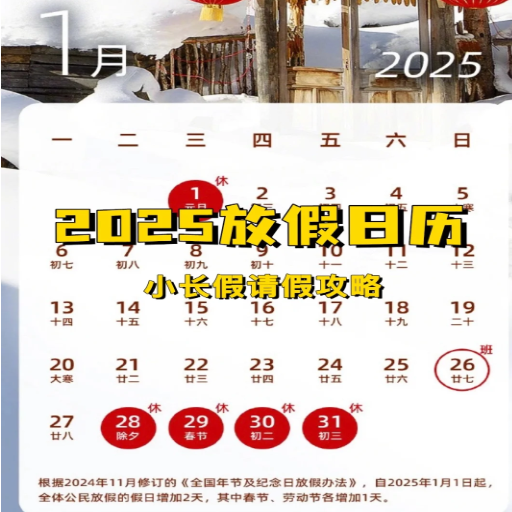
What are the Main Public Holidays in China for 2025
The holidays celebrated during 2025 in China are diverse and include essential events on the national calendar and cultural festivals. Here are the key holidays:
- New Year’s Day (January 1): Marks the beginning of the Gregorian calendar and is celebrated on the 1st of January with a public holiday of a single day.
- Spring Festival (Chinese New Year) (January 29 – February 4): Widely considered the most significant holiday in China, the Spring Festival lasts one week and includes family gatherings and cultural activities, such as feasting on traditional dishes.
- Qingming Festival (April 4): Tomb-Sweeping Day is a public holiday on which citizens honor their ancestors by cleansing their graves.
- Labor Day (May 1): Once known as International Workers Day, this public holiday honors and celebrates workers and is often accompanied by a three-day break.
- Dragon Boat Festival (June 6): The famous Chinese holiday in which dragon boat races are held, along with eating zongzi and rice dumplings wrapped in bamboo leaves.
- Mid-Autumn Festival (October 6): The Day when citizens enjoy moon-watching and eating mooncakes, a symbol of harmony and reunion within the family.
- National Day (October 1 – October 7): The 1st of October is the day the Republic of People’s China was founded; thus, during the first week of October, citizens get to enjoy the ‘golden week’.
These festivals help integrate people from all walks of life in China and remind us how the old and new modern-day traditions blend seamlessly. While most holidays are well publicized, the actual dates are determined closer to the time by government meetings.
When is the Chinese New Year in 2025?
The Year of the Snake will commence on Wednesday, January 29, 2025. The Chinese New Year is celebrated on the first day of the first lunar month, following the lunar calendar. However, this holiday can differ yearly because the Gregorian calendar is used.
Understanding the Spring Festival Traditions
The Chinese New Year, also known as the Spring Festival, focuses heavily on traditions celebrating family, harmony, and wealth. It usually takes place over 15 days and starts with family commingling during New Year’s Eve. The festival ends with the Lantern Festival. Some other traditions include cleaning the house for the new year, welcoming the new year with red decorations such as lanterns and couplets, and inviting good fortune while scaring away evil spirits.
Among the wealth of traditions is the essential meal of the year, the reunion dinner, which consists of families gathering to dig into fish, which symbolizes wealth, dumplings, which represent reunion, and noodles, which symbolize longevity. Another treasured tradition is a red envelope (hongbao) filled with money, which is a blessing and good fortune, especially for youngsters.
- Dates & Duration: The festival spans 15 days, starting from the first day of the first lunar month in the Chinese calendar.
- Zodiac Influence: 2025 will usher in the Year of the Snake.
- Symbolic Colors: Red is predominant, reflecting happiness and success according to Chinese cultural beliefs.
- Culinary Traditions: Tangyuan and sweet rice balls symbolize wholeness and unity during the lantern festival. Fish are prepared whole, symbolizing surplus, and dumplings represent ancient gold ingots.
Watching fireworks, which are believed to drive away evil spirits, is also practiced in modern times. Most people come together during the Spring Festival Gala for a family reunion. Though many regions participate in this festival, everyone highly values the core beliefs of family, hope, and prosperity.
Overview of the China Public Holiday Calendar
Their public holiday calendar caters independently to China’s various celebrations, like the modern commemorations, and comes with multiple resting days and cultural festivities. Some of the notable holidays are The Qingming Festival, A day dedicated to honoring ancestors, The Chinese New Year (Spring Festival) which is celebrated for an entire week, and Family gatherings are held during the mid-autumn festival where mooncakes are also served. National Day is another modern holiday, but it comes with a week break, referred to as ‘Golden Week’ for domestic travel and relaxation. The government tends to modify workdays, through or post holidays, to carve out more protracted periods of breaks; this peculiar system is only exercised in China.
How Does the Chinese New Year Affect Daily Life in China?
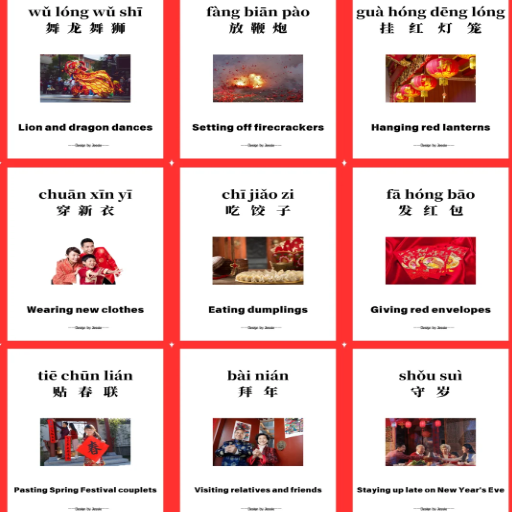
How Does the Chinese New Year Affect Daily Life in China
The Chinese New Year, the Spring Festival, is the most celebrated holiday in China. This holiday is why businesses close for an extended period, and millions use this opportunity to travel to their hometowns. This massive population shift is the most significant human migration in the world. Cities are decorated with red lanterns and other festive attires, which change the atmosphere of China and make it vibrant and unique. Local markets are crowded with individuals purchasing festive items for the reunion dinner while red envelopes are being passed out on the streets. Traditional fireworks can be witnessed throughout the city during this time, outshining other areas. Chinese New Year significantly impacts the country’s public and personal life flow.
Impact of Public Holidays on Public Transport
A surge in demand during public holidays dramatically affects the public transport system. For example, there is an increase in the number of people traveling between cities during holidays like the Spring Festival in China. Millions of train tickets are sold daily, leading to the railways functioning at maximum capacity. This is made easier with the use of high-speed trains able to reach 350 km/h, although they become less accessible as tickets are often sold out months in advance.
Overcrowding is not limited to high-volume trains, as buses and subways have become packed with commuters in large cities. During busy travel, seating space is limited, and people may have to wait longer and longer for a bus or train. To tackle heavy traffic, cities can change and optimize routes, add more vehicles to the fleet, or increase the service frequency.
High-volume airports must deal with an influx of flights but are equipped to manage them, as aircraft occupancy rates often exceed 80-90%. While all this is happening, airlines can choose to increase the number of passengers on the plane by using larger airplanes and holiday schedules. Still, the weather and other logistical issues can lead to flight cancellations or delays.
Good planning can effectively address these pressures of the holiday season, including integrating ticket reservation systems, applying modern traffic control techniques, and providing alternative modes of transport to help smooth operations during busy times.
The Significance of the Spring Festival for Chinese People
Our most significant traditional holiday is the Spring Festival or Chinese New Year, which stands for family reunion, togetherness, a fresh start full of new possibilities, and good luck. It symbolizes the end of winter and the beginning of spring, which is a big part of our farming culture. Families follow many customs, such as cleaning their house to eliminate negative energy, preparing lots of food, and giving children red envelopes, which symbolize good wishes. The celebration is based on the lunar calendar, usually between January 21 and February 20. It can last for up to 15 days. The explosive lion dances, fireworks, and red and gold decorations showcase the fantastic cultural values of happiness, renewal, and harmony.
What Other Traditional Holidays Are Celebrated in China?
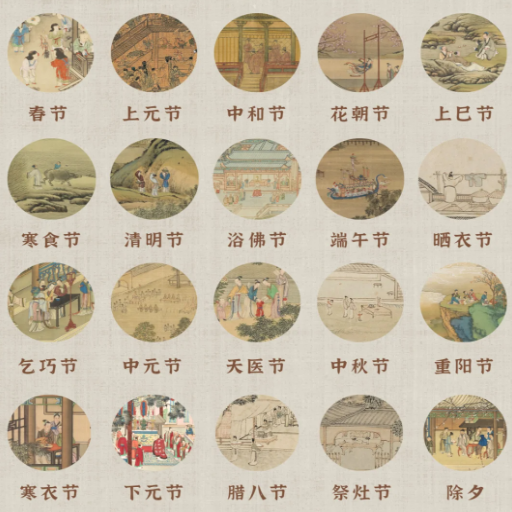
What Other Traditional Holidays Are Celebrated in China
Rich in culture and history, China has a variety of unique and worth-noting traditional holidays. The Mid-Autumn festivity is celebrated with mooncakes and family get-togethers for a full moon viewing. The Dragon Boat festival involves dragon boat races and the preparation of ‘zongzi’ sticky rice dumplings in honor of the great poet Qu Yuan. Lastly, the Qingming Festival is a unique holiday where the ancestors’ graves are tended to, showing great respect. Each holiday reflects unique traditions and values, strengthening family, community, and heritage connections.
Exploring the Dragon Boat Festival and Its Significance
The Dragon Boat Festival, also known as Duanwu Festival, is celebrated on the fifth day of the fifth lunar month. This traditional Chinese holiday holds deep historical and cultural significance. At its core, the festival celebrates Qu Yuan, a respected politician and poet from the Warring States period who decided to drown himself in the Miluo River as a form of protest against corrupt politics. To honor him, vibrant dragon boat races are held and organized by communities as a way of showcasing unity and teamwork.
Key traditions and practices during the festival include:
- Dragon Boat Races:
- Purpose: Commemorating Qu Yuan and demonstrating collective strength and harmony.
- Aspects:
- Boat length: Typically 40–50 feet (12–15 meters) long.
- Crew size: Approximately 20–22 paddlers, a drummer, and a helmsman.
- Race distance: Commonly 200–500 meters.
- Eating Zongzi:
- Purpose: Sticky rice dumplings wrapped in bamboo leaves are prepared to remember the villagers’ efforts to save Qu Yuan. The villagers threw rice into the river to distract the fish.
- Varieties:
- Sweet zongzi with red bean paste or dates.
- Savory zongzi with pork, mushrooms, or salted duck eggs.
- Ward Off Evil:
- Include hanging mugwort and calamus plants, wearing colorful silk threads, and pouches filled with aromatic herbs that protect from disease and misfortune.
The Dragon Boat Festival is a historic celebration and the foundation of fierce willpower, humanitarianism, and zeal for history. It still promotes cultural togetherness and identity through celebration and competition.
The Meaning Behind Mid-Autumn Festival
Mid-Autumn Festival, or simply Moon Festival, is a traditional celebration on the 15th of the 8th lunar month. This time of year represents the moon’s fullness and symbolizes family reunion, harmony, and thanksgiving. The festival dates back over 3000 years to the Shang Dynasty when it married ancient agricultural ceremonial traditions with a moon worship practice.
Cultural Significance
The Mid-Autumn Festival centers on harmony, which suggests families should unite. Families wish to achieve happiness and prosperity while sharing meals and admiring the bright full moon alongside other family members. Legends like the tale of Chang’e—the Goddess of the moon—make this celebration even more festive, adding a mythical dimension and enriching the heritage and narrative of the festival.
Key Customs and Practices
- Mooncake Sharing:
- Mooncakes are filled with lotus seed paste, red bean paste, salted egg yolk, nuts, and many other ingredients. They are in the shape of a circle, which reflects completeness and reunion, making mooncakes symbolic signs of the festival.
- Although mooncake’s nutritional data is vastly different, each cake is estimated to contain about 800-1000 calories, depending on the filling.
- Lantern Displays:
- Children raise their hopes and joy during festivities by carrying and lighting lanterns and modern electric candles, which symbolize hope.
- Admiring the Moon:
- People love watching the moon, and some memorable poems and stories are told as families relax during the peaceful night.
The Mid-Autumn Festival is still celebrated as a holiday that unites many different demographics while celebrating pride in one’s ethnicity. The themes of appreciation and unity are cherished by people, which makes it unique in both East Asia and around the globe.
Understanding the Tomb-Sweeping Day Traditions
Tomb-Sweeping Day, or the Qingming Festival, is a time-honored tradition in China. As part of the celebration, families clean the graves of their ancestors, prepare feasts for the deceased, burn incense, and offer symbolic paper joss to their ancestors. At its core, the festival values filial piety and reverence for one’s ancestors.
Based on my research, this technical aspect includes proper timing, which is usually determined by the lunisolar calendar. The Qingming Festival usually takes place around the 4th or 5th of April, as the seasons shift and an essential phase in the 24 periods of the Chinese solar calendar begins. Usual offerings include tea, alcohol, paper, and fruits, depicting customs and their transformation through time.
Modern digital offerings and biodegradable materials as eco-friendly substitutes for traditional burning also depict a new way of simultaneously connecting cultural heritage and nature. This allows the festival to retain its importance and meaning throughout the years while ensuring its past and spiritual essence is not lost.
How is the Chinese Lunar Calendar Structured?
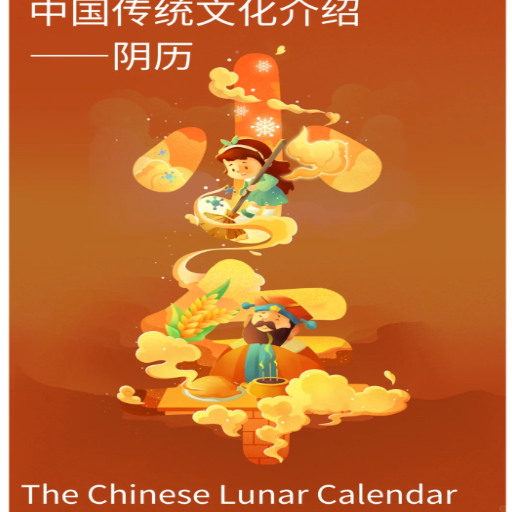
How is the Chinese Lunar Calendar Structured
The Chinese Lunar Calendar is based on the moon and sun cycles, intertwining lunar and solar components. A year consists of 12 lunar months, each containing roughly 29.5 days, resulting in an approximate total of 354 days. Every three years, a leap month is added to maintain alignment with the solar year, seasons, and agricultural cycles. This intercalation is carefully calculated to ensure accuracy and continuity. Furthermore, the calendar is divided into 24 Solar Terms that reflect changes in the weather, astronomy, and other natural phenomena that aid cultural and agricultural events. This dual-system design demonstrates cultural significance alongside remarkable precision.
The Role of Lunar New Year in Chinese Culture
The commencement of a new lunar year is characterized by the Lunar New Year (or Spring Festival), which is celebrated primarily in China, making it the most critical celebration per Chinese traditions. Apart from marking the beginning of a new year, this festival also has a vital role in restoring family relations, paying tribute to ancestors, and boosting hopes for the future. The date changes yearly but is observed between January 21 and February 20. Many customs are associated with this festival, such as cleaning the house to remove evil spirits, decorating the house with red lanterns and couplets, and giving money-filled red envelopes (hongbao) as presents.
From a more exact-position perspective, the timing of the New Year is based on the winter solstice and the new moons. The shifts in the lunar calendar guarantee the needed adjustments to ensure that the Lunar New Year does not conflict with set seasonal periods.
These customs, combined with the solar and lunar systems, have made the festival celebration more culturally diverse. It covers a series of essential concepts, such as change, balance, and happiness, which are plentiful among people of all ages.
How the Chinese Calendar Influences Holiday Calendar
Lunations determine the holidays on the Chinese calendar and correspond with the change in seasons. The Lunar New Year and the Mid-Autumn Festival are examples of this, and specific markers of the lunar calendar decide upon them. The Chinese New Year is based on the new moon during the first month of the lunar year. It occurs between the 21st of January and the 20th of February. To offset the solar year, lunar leap months are added every two to three years, ensuring that all the holidays follow the seasonal and agricultural cycles. This type of adjustment is controlled with exact astronomical calculations, demonstrating the Chinese calendar’s balance between modern science and traditional culture.
What are the Most Popular Festivals in China?
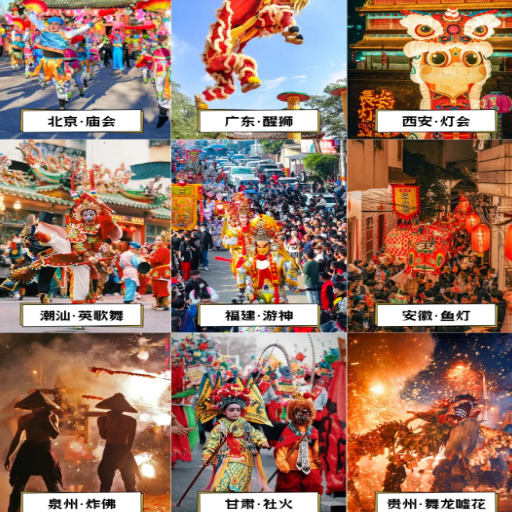
What are the Most Popular Festivals in China
China has many traditional festivals; the most prominent is the Lunar New Year (Spring Festival). This festival is celebrated with family gatherings, red envelope giving, and feasts. It also marks the beginning of the lunar calendar. The Mid-Autumn festival is celebrated widely as well and honors the full moon. During this festival, mooncakes are regarded as a delicacy. The Dragon Boat Festival helps to remember the poet Qu Yuan by celebrating dragon boat races and serving sticky rice dumplings as traditional food. Additionally, the Lantern Festival marks the end of the Lunar New Year celebration and the Qingming festival, when people pay respects to their ancestors while spending time outdoors. Each of these festivals highlights the traditions and culture of China.
Celebrating the Lantern Festival
The Lantern Festival falls on the fifteenth day of the first lunar month and is celebrated as the culmination of the festivities of the Lunar New Year. This splendid festival comprises showcasing beautiful lanterns, enjoying tangyuan (in other words, glutinous rice balls filled with delicious sweet or savory fillings), riddles, and various festive foods. Hope and reunion are symbolized through lanterns of different shapes, sizes, and colors decorating the night sky. Traditionally, lion and dragon dances and other folk performances are also carried out as a celebration. This event also symbolizes light and the togetherness of the people in conjunction with nature, which is observed during the first full moon of the lunar year.
Highlights of the National Day Celebrations
Each year, China’s National Day is observed on the first of October, celebrating the birth of the People’s Republic of China in 1949. The day calls for numerous patriotic ceremonies and parades, which foster love and harmony among citizens. The marking feature includes flag hostings, which take place at Tiananmen Square, located in Beijing. The event gathers thousands of citizens and is televised throughout the state. During these significant anniversaries, annual military parades also become common, achieving state-of-the-art technology and advancement.
During the week-long Golden Week vacation, cities are decorated with national flags, flowers, and other themed decorations. Famous landmarks and public places organize fireworks, large-scale cultural performances, and elaborate light spectacles showcasing China’s success. Such activities boost tourism as citizens enjoy traveling within China to visit scenic spots, cultural sites, or historical places, with a significant focus on China’s revolutionary history education.
On National Day, most parks and plazas celebrate the community National Day festival, featuring a child-friendly program, family activities, concerts, and crafts. In addition, parades create and broadcast videos, plays, and documentaries that increase national and age pride, respectively, in people of any size. This day is remembered as a day that commemorates and rewards the rewards the country has achieved and hopes to accomplish.
Understanding the Labor Day Holiday in China
In China, May 1st is International Workers’ Day, now a day for rest, cultural reflection, and travel. Millions of citizens take time off work and go on short holidays, often spending time with family or visiting specific tourist places. Historically, the day symbolizes the value of working people to the country.
Step by step, the government has changed the holidays throughout the years to offer longer breaks by combining weekends and holidays. This and other measures give more free time to serve citizens’ purposes. This day is celebrated with cultural events, including shows and parades that display employees’ accomplishments. There is a notable increase in the use of transportation services during the holidays due to travel, which results in trains and flights being booked days in advance. Travel services note the importance of pre-planning during the peak season, referring to the use of high-speed rail and interstate highways as the backbone of the country’s transportation system.
References
Frequently Asked Questions (FAQ)
Q: What are the official public holidays in China for 2025?
A: In 2025, China will observe seven official public holidays, including the Chinese New Year, Spring Festival, and National Day. These holidays are part of the public holiday schedule established by the government.
Q: When is the Chinese New Year holiday in 2025?
A: The Chinese New Year holiday 2025 will start on January 29th. According to the Chinese calendar, this is a major public holiday celebrated with family gatherings and festivities, marking the beginning of the lunar new year.
Q: How long is the Chinese New Year holiday period in 2025?
A: The Chinese New Year holiday is typically a week-long holiday in China. In 2025, it will likely include additional days to accommodate travel and celebrations, allowing Chinese people to celebrate with their families.
Q: Are there any additional holidays during the Chinese New Year period in 2025?
A: Additional holidays and observances may vary by region during the Chinese New Year period. These can include cultural events and traditional festival activities, especially in major cities like Beijing.
Q: How do Chinese people celebrate the New Year in 2025?
A: Chinese people celebrate the New Year with various traditions such as family reunions, feasting, and fireworks. The festivities often include the Spring Festival Eve dinner and symbolic practices to bring luck in the coming year.
Q: Will there be a golden week in 2025 for the Chinese New Year?
A: Yes, the Chinese New Year typically coincides with Golden Week, a week-long holiday period that gives people time to travel and celebrate with loved ones across the country.
Q: What is the significance of the 15th day of the New Year in Chinese celebrations?
A: The 15th day of the New Year is celebrated as the Lantern Festival, marking the end of the Chinese New Year festivities. Families gather to admire lantern displays and enjoy traditional foods during this time.
Q: Is the Chinese New Year considered a national holiday in China?
A: Yes, the Chinese New Year is a national holiday in China and one of the year’s most important holidays. It is widely celebrated across the country with various traditional and cultural activities.
Q: How does the public holiday schedule in 2025 affect travelers to China?
A: The public holidays scheduled in 2025, including the Chinese New Year and other major holidays, can impact travel plans due to increased demand for transportation and accommodations. Travelers should plan and be aware of these peak times.